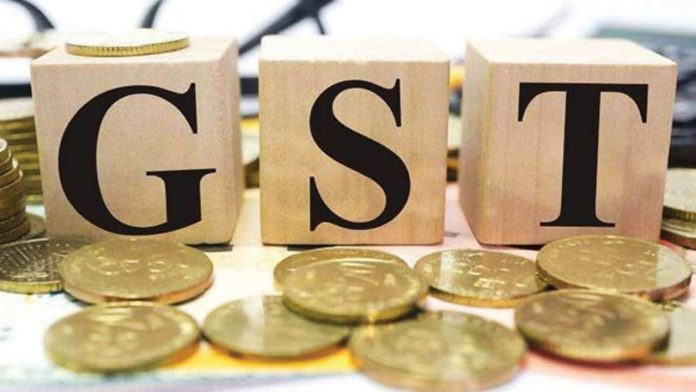This article is written by Kishore Kumar pursuing Certificate Course in Advanced Corporate Taxation from LawSikho.
Table of Contents
Introduction
GST (Goods and Services Tax) is an indirect tax. The Goods and Service Tax Act was passed in Parliament on 29th March 2017 and came into effect on 1st July 2017. GST has brought in a ‘“one nation one tax” system, it is replaced with many indirect taxes called VAT, Service Tax, Excise Duty, etc. GST is levied on the supply of goods and services and It is a single domestic indirect tax law for the entire country.
In the earlier tax regime, there are multiple taxes at the state level which included VAT, luxury tax, taxes on lottery, state cesses, betting and gambling, entertainment tax, surcharges, octroi, entry tax, and purchase tax and also at the central level it was loaded with central excise duty, additional customs duty, service tax, and additional excise duties. These multiple taxes confused the taxpayers/consumers to understand the bill and they are very much unsure about the tax calculations/if any error in tax. Whereas GST brought PAN-India Model tax system and the consumer became able to understand the tax details on bills. That is why it is called the “one nation one tax” system.
Impact of GST on protected monuments
An ancient monument that is declared to be of national importance by or under this act is called a protected monument. All ancient and historical monuments which have been declared by the Ancient and Historical Monuments and Archaeological Sites and Remains (Declaration of National Importance) Act, 1951, or by Section 126 of the States Reorganization Act, 1956 to be of national importance shall also be deemed to be protected monuments for the purposes of this Act.
A total of 3,686 historical monuments and archaeological sites have been declared protected by the ASI. Over a thousand temples have been declared as protected monuments under the Archaeological Survey of India, the government informed Parliament today. In a written reply in Lok Sabha, Culture Minister Mahesh Sharma said that a total of 1,076 temples have been declared as protected by the ASI. “There are 506 monuments and sites including 242 temples declared as protected in Karnataka under the ASI,” he said.
There are few ticketed historical monuments are as follows for your reference (The entire list of Protected Monuments can be taken from the following links: List of protected monuments accepted by the government of India, corrected up to September 1928 | INDIAN CULTURE).
List of ticketed monuments:
- Group of Monuments – Mamallapuram – Kanchipuram (District)
- Thirumalai Nayak’s Palace – Srivilliputhur – Virudhunagar
- Part of Fort complex where objects kept inside the fort St.George Called Fort Museum – Egmore, Chennai – Chennai
- Taj Mahal, Agra
- Konark Sun Temple, Konark
In terms of tax on ticket charges for the protected monuments, the GST Council in its 23rd meeting on November 10, 2017, recommended widespread changes in the Goods and Service Tax (GST). In this meeting, it was mentioned that rough precious and semi-precious stones will attract a GST rate of 0.25%, admission to “protected monuments”. Later there was a gazette notification is issued on 14th November 2017 “Notification No.47/2017”-Central Tax (Rate) at New Delhi saying Serial No.79A, Heading 9996, Services by way of admission to a protected monument so declared under the Ancient Monuments and Archaeological Sites and Remains Act, 1958 (24 of 1958) or any of the State Acts, for the time being in force of No Tax (NIL Rate).
Earlier during the Service tax regime it was levied by 15% whereas now as per the above mentioned notification GST is “NIL”, because of this the ticket cost to visit the museum or related places is comparatively cheaper than earlier. This makes it interesting to visit by everyone, especially foreigners but when we think about the impact of GST on tourism there are some pros and cons as follows.
Impact of GST on tourism
Pre and post GST on tourism/hospitality
-
Pre GST
Before GST there were multiple taxes in hospitality industries which made it more complicated for the end users to understand the bills and it was like we paid tax on tax, which is like the hospitality charges are very high. Also, the hotels and hospitality industries are faced with more complications with regard to providing compliance filings.
-
Post GST
GST was introduced with the motive of one nation one tax. GST has replaced multiple taxes with one single tax. The tax rate slabs seem to attract more tourists to India. GST has removed the multiple taxes by the introduction of a single tax regime. The GST tax rate lies in the bracket of 16% to 18%. Comparatively, GST rates seem to be reduced from earlier multiple tax regimes. Even though there are mixed opinions about the GST on pan India. Here are some pros and cons following the conclusions.
Pros of introducing GST
- Easier administrative work has abolished other indirect taxes and brought into one nation one tax system. This leads to a reduction in fewer procedural steps.
- Earlier facing difficulties of multiple taxes for a common man. Now GST brought clarity to a common man to understand the bill/invoice as a customer by seeing GST alone along with the charges.
- Generally, when the customer checks out from the hotels it will become delayed because of generating bills due to some tax calculations/complications this leads to the customer catching the flight/train within the timeline. After GST there is one tax that improves the quality of service.
- The tourism and hospitality industry can claim input tax (ITC) GST fully and adjust against the output. Before GST, the tax paid on inputs (raw edibles for food, cleaning supplies, etc.) could not be adjusted against the output without any complications. However, this will become easier in the GST regime.
Cons of introducing GST
- Businesses will also be looking to recover from the technology cost from their customer, so this also leads to increasing the cost of service.
- Dependency on technology. It will require businesses to become technologically adept, increasing the technological burden and cost for compliance.
- Comparatively the Asian neighbors like Japan and Singapore are having lesser tax rates (8% and 7% respectively) which is the reason they are high on the tourist Wishlist. Even though India is a very interesting tourist spot, we are losing out on the high crowd due to the higher rates.
Conclusion
GST has now arrived with mixed opinions like it brought the rules and regulations are easier and increased the cost and compliances. According to the above analysis on the impact of GST on Protected Monuments even though the GST rate becomes NIL whereas GST on the tourism rates are not reduced at a bigger level as mentioned above. The Hotel and Restaurants Association of Western India had been expecting a much lesser rate around the GST rate at 5% as they believe that this will bring the lower rate and more tourists to India. However, The GST Council deemed it fit with the 18% GST rate. However, it has to look forward to comparing the weight between pros and cons which looks better for this tourism sector.
References
- https://www.taxscan.in/no-gst-entry-fees-protected-monument-govt-issues-notification/13389/#:~:text=issues%20Notification%20%5BRead%20Notification%5D,-By%20Taxscan%20Team&text=It%20to%20months%20for%20the,ticket%20charges%20to%20ticketed%20 monuments
- https://cleartax.in/s/impact-of-gst-hospitality-industry
- https://www.indianculture.gov.in/list-protected-monuments-accepted-government-india-corrected-september-1928
- https://www.cbic.gov.in/htdocs-cbec/gst/draft-rules-format
- https://www.asichennai.gov.in/monuments_full_list.html
Students of Lawsikho courses regularly produce writing assignments and work on practical exercises as a part of their coursework and develop themselves in real-life practical skills.
LawSikho has created a telegram group for exchanging legal knowledge, referrals, and various opportunities. You can click on this link and join:
 Serato DJ Crack 2025Serato DJ PRO Crack
Serato DJ Crack 2025Serato DJ PRO Crack











 Allow notifications
Allow notifications



